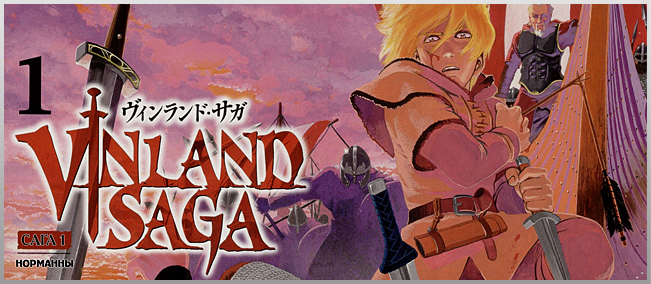Review: “Vinland Saga”

Vinland Saga is a manga set in England during the start of the 11th century and focused on the Viking invaders. Written and illustrated by Makoto Yukimura, the series stars a young Viking named Thorfinn who is driven by his singular desire to avenge his murdered father: the great warrior Thors. As far as historical fiction epics go, Vinland Saga is a sprawling, violent, and intricate tale of revenge, redemption, and what it means to be a warrior.
When teenage Thorfinn is first introduced, he is working for a commander by the name of Askeladd. It is soon revealed that the man he works for is the very same man who brutally murdered his father when he was a child. Thorfinn’s only desire is to avenge his father by defeating Askeladd in a duel, and, taking full advantage of this, Askeladd manipulates Thorfinn’s anger and hatred for him to keep the boy under his control. From the very beginning of the series, Yukimura establishes various plot threads and relationships—such as this one—that bind Thorfinn in a web of tension and violence.
One of the series’ greatest strengths is the sheer amount of harshness and malevolence that shapes the society and world the characters inhabit. Most of the characters, Thorfinn included, have blood on their hands—the blood of men, women, and children more often than not—and Yukimura does not ever shy away from that fact. The ambiguity of morals and the blurry line between what is good and what is not, is a major theme of the series and casts a looming shadow over every action and decision made by the central characters. It adds depth to what would otherwise be a run-of-the-mill violent historical fiction epic more concerned with action scenes and setting than the actual plot or characters, and instead creates a narrative deeply entrenched in the duality of humanity.

Of course, a review of Vinland Saga would be incomplete without addressing Yukimura’s breathtaking art. Yukimura, unlike other manga artists, relies primarily on line work to create shading and depth to his illustrations. As a result, Vinland Saga has a very distinct aesthetic. Almost analogue in appearance, the series looks like something out of an aged storybook, befitting its epic nature. And whether it’s between two men or two entire armies, Vinland Saga most certainly delivers on the kind of grand, violent and brutal fight scenes expected of a historical fiction story about Vikings. From the fractured bones and ripped tendons of a dismembered hand, to the expressions of horror or rage on a character’s face, these gruesome illustrations are where Yukimura’s attention to detail truly shines.
However, Vinland Saga isn’t a manga to recommend to everyone. It’s pretty obvious from the very first issue that the series is a violent one and after over one hundred chapters, the amount of gore and blood is as prevalent as ever. For all its strengths, the series also has a few pacing problems, especially in the beginning. It takes a long time, perhaps longer than necessary, for the plot to progress farther than its initial premise and develop the more complex and interesting aspects of the series. Admittedly, getting through those first few story arcs requires a fair amount of spare time that not everyone can afford. It’s really only after those chapters that the story comes into its own and starts to feel more like the heroic narrative it hinted at from the beginning.
Ultimately, Vinland Saga is a fun, dramatic, and immersive experience to anyone willing to put in the time. It has an expansive cast of characters with diverse motivations and personalities and features a sprawling, grand setting for its rich story to take place. With Yukimura’s attention to detail, striking character design, and dynamic fight scenes, Vinland Saga is just as much a visual narrative as it is a historical fiction epic.